Omnichannel shopping has changed the way shoppers research products before deciding on buying. Shopping-related research on social media is increasingly becoming the norm, with the #unboxing hashtag getting millions of views across YouTube, Instagram, and TikTok. It certainly has become a huge marketing opportunity for brands.
Delivering the best unboxing experience has not only become a great brand experience but a crucial marketing tool, with 42% of marketers tapping influencers and creators to produce more unboxing content.
Learn what an unboxing experience means, why it is important, and how you can execute our unboxing experience ideas.
What Is an Unboxing Experience?
An unboxing experience is the step-by-step ritual of opening and unpacking an online purchase. For ecommerce brands, the first physical touchpoint between you and your customer is when they receive your package in the mail. That’s why it is very important that you leave a memorable and positive first impression.
And take note, a good unboxing experience is more than just adding stickers and a discount coupon to your customer’s orders (though they still help); it’s actively including emotional appeal to your packaging, letting you provide value-added selling and an experience-driven purchase for your buyers.
How to Deliver the Best Unboxing Experience
Learn how to deliver the best unboxing experience by reading our tips below to help jumpstart unboxing experience ideas.
1. Brand the first packaging component your customer sees
Part of creating a memorable unboxing experience is ensuring your customer clearly identifies where the package is coming from with the outer packaging alone. It all starts with your brand. Branding your outer packaging solidifies your brand and adds a touch of sophistication, too.
Did you know? 61% of shoppers are more excited if their ordered products arrive with branded packaging. (Source: Bouvier Kelly)
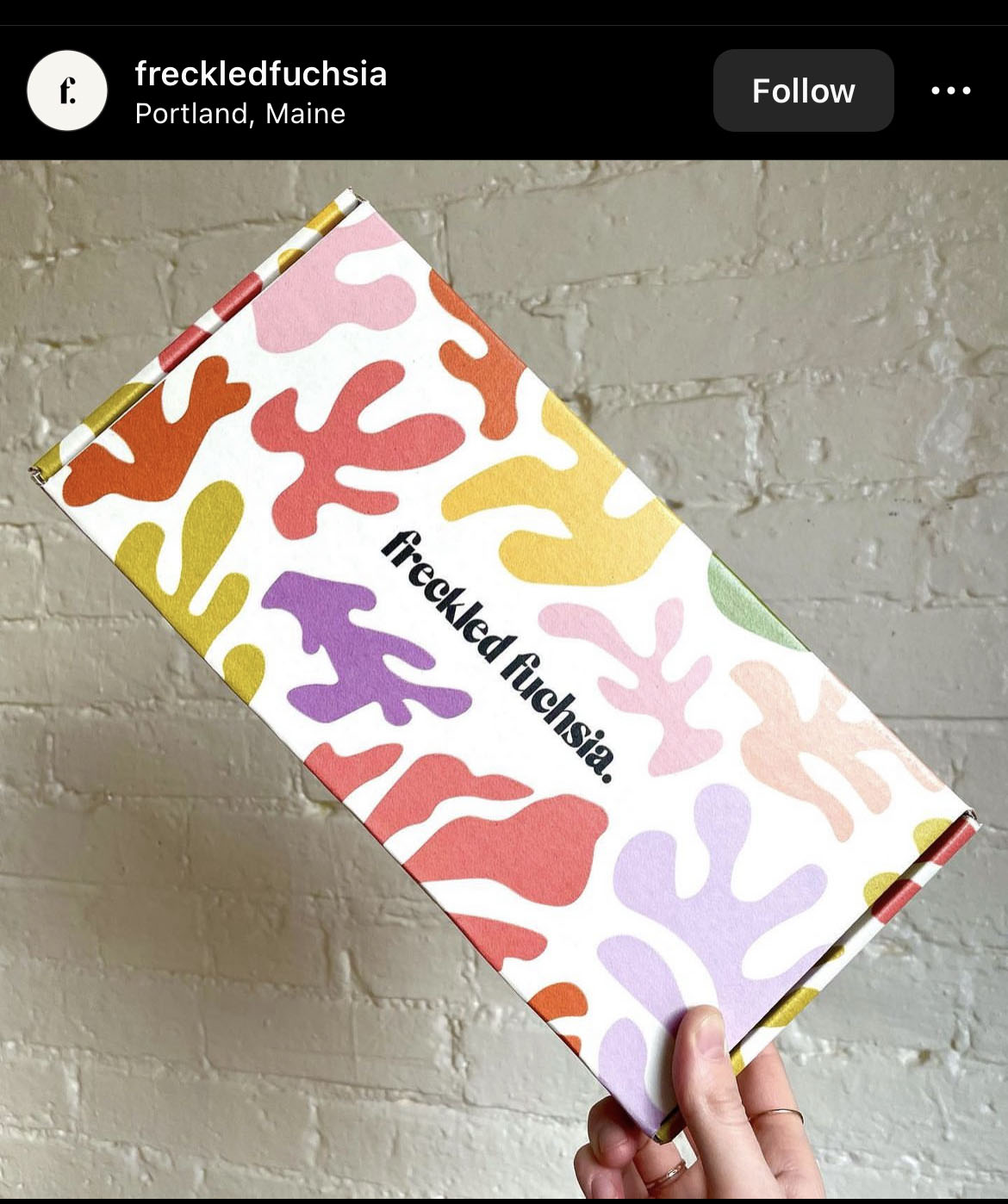
(Source: Freckled Fuchsia Instagram)
Plain boxes are practical for protection for shipment, but fortunately, they are no longer your only option thanks to a myriad of cheap custom boxes available. You can add your logo to a standard box and have your box in brand colors, or you can completely design a custom-shaped box.
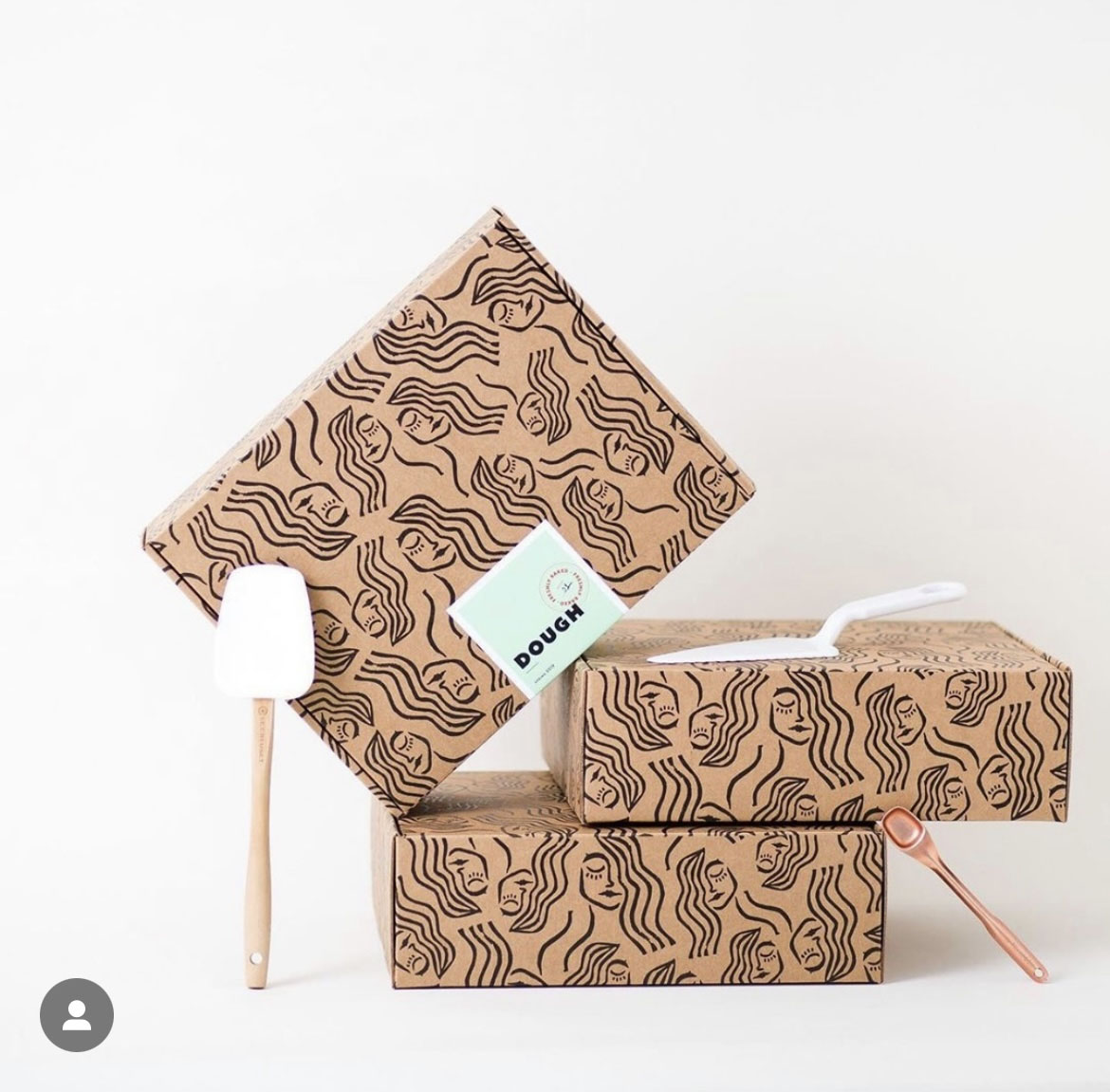
(Source: AUR Body Instagram)
Also consider the inside of the box. You can make it an extension of your outer box packaging like what AUR Body did with their product boxes (notice how they kept their outer box plain with just their logo and then made the insides colorful) or print a witty tagline in the inner flap of your box like what Kimiko’s Kookies did with her cookie boxes.
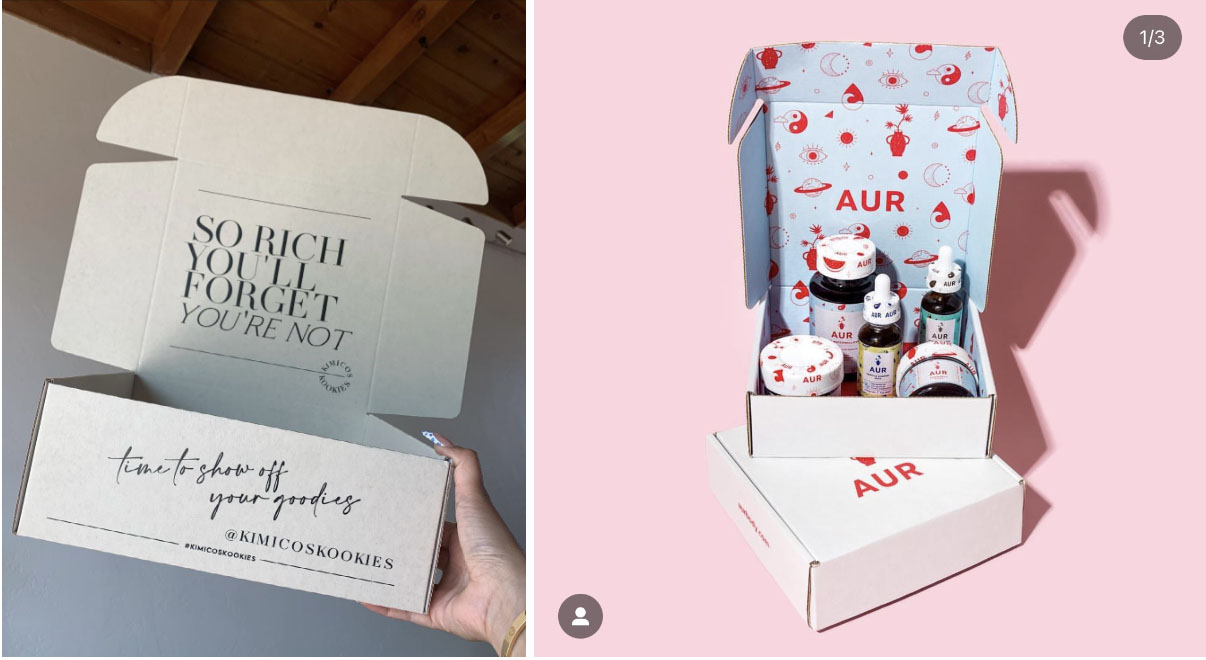
@kimicoskookies and @aurbody custom boxes (Source: Instagram #packlane)
Take note that your unboxing experience doesn’t need a box, either. You can use padded envelopes, paper tubes, and stand-up pouches with custom-brand stickers at a lesser price. For example, children’s apparel brand Isla and Hoo, make a call out to their name with the saying “Nice to Meet Hoo” with water-activated tape, and French illustrator, Nini of @niniwanted, prints cute illustrations onto a brown paper bag and completes the look with her own sticker as well.
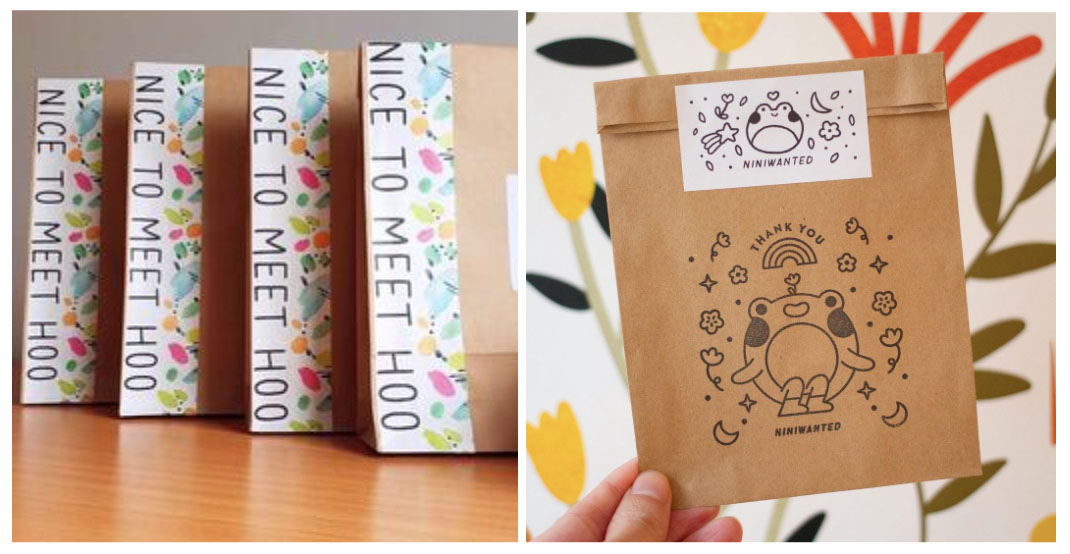
Isla and Hoo and @niniwanted custom packaging on paper bags (Source: Instagram)
While custom packaging will require some upfront investment and take a chunk at your overhead expenses, the extra effort helps build brand identity and trust to create a lasting first impression.
TIP:
- Short on budget? Customize your product packaging with branded packing tape.
- When deciding your outer packaging, try to stick to your brand logo and colors.
- See our recommended sources for best custom mailer boxes and packaging.
2. Get creative with packaging inserts
You also need to pack with presentation and purpose in mind. Packaging inserts are used to ensure your products don’t move too much during transit, but fillers also need to be presentable and contribute to the overall unboxing experience.
Package or void fillers like tissue paper, wood wool, honeycomb paper, or cushioned material secure your products inside the box during shipping and add premium value to your brand and product. These protective elements also create a sense of anticipation during unboxing.
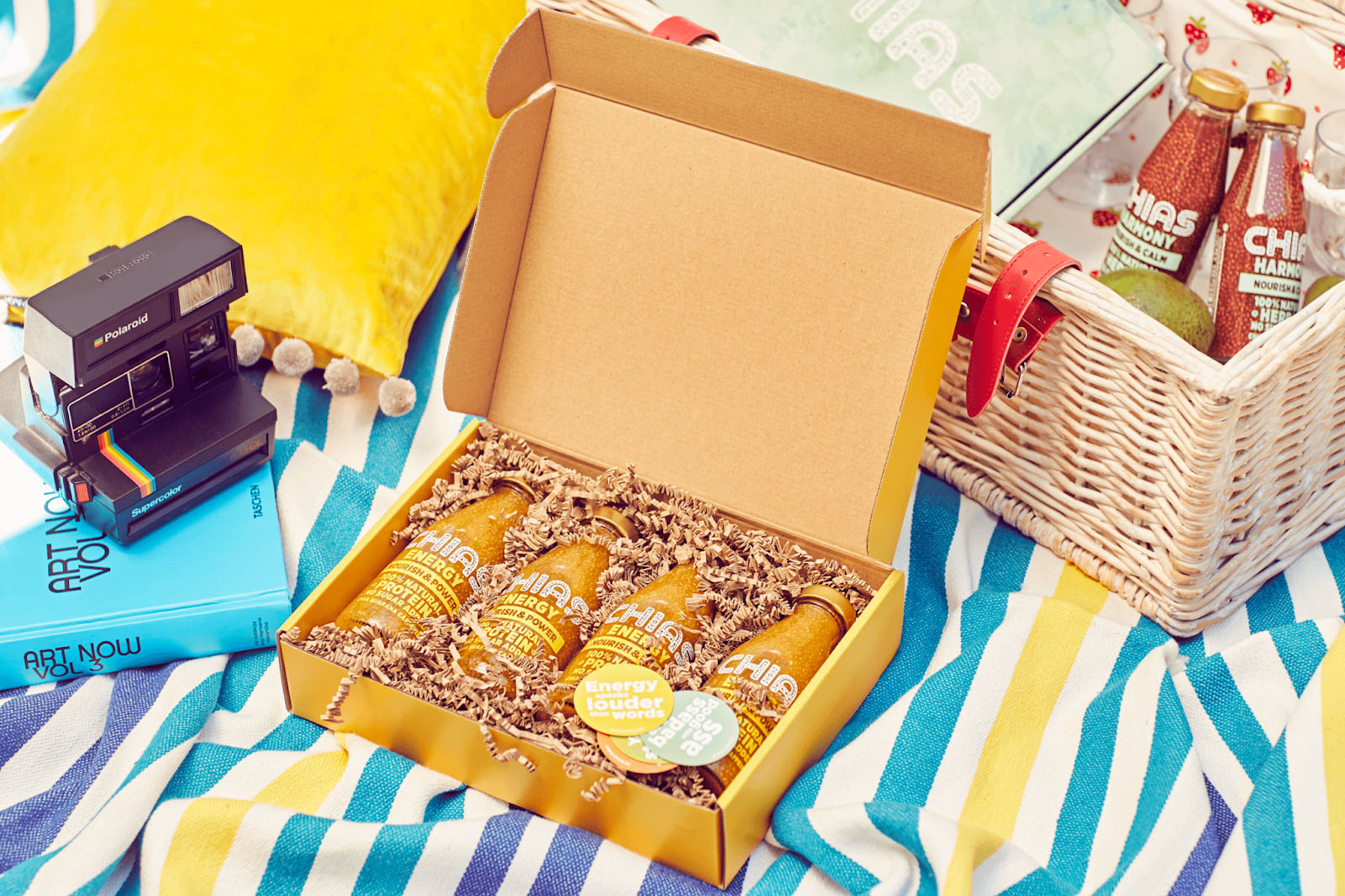
Superfood brand Chias uses crinkled paper to hold its products in place and fill empty spaces. (Source: Packhelp)
TIP: A good rule of thumb for package fillers is to use at least two to three centimeters of cushioning around all sides of the items inside the box.
You can also use cardboard inserts where there are specific slots for your products to ensure they don’t move during transit and stay in place during unboxing. This is recommended for small products such as make-up, samplers, and candies. Sephora and IKEA LORDAGSGODIS candies have used inserts, shown below.
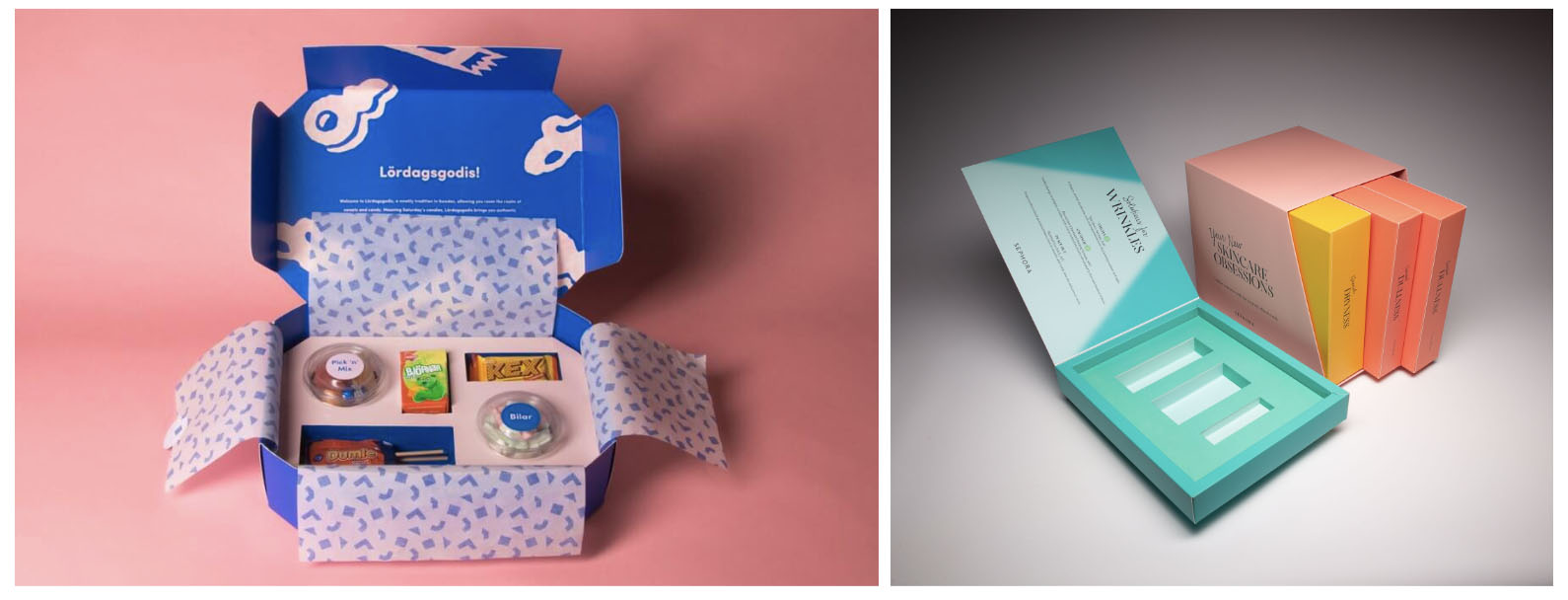
Sephora and IKEA LORDAGSGODIS candies custom boxes with cardboard inserts for product slots (Source: Packhelp and Structural Graphics)
3. Make it easy for customers to open and use your product boxes and packaging
Part of the unboxing experience is how easy your customer can open your package. Excessive securing your products through tapes, layers of bubble wrap, or multiple boxes is a surefire way to turn off customers. You don’t want a customer’s excitement to unbox your product to turn into frustration.
Here are some tips to ensure your packages can easily be opened:
- Notice how unboxing videos on social media are all about comforting sounds—think ASMR ASMR is a pleasing and calming sensation in the body triggered by things like whispering voices and paper tearing, often as a response to particular comforting or gentle sounds. . Today’s social media users love comforting sounds. Your packaging will be better off giving satisfying rip (tear strips in poly mailers, for example) rather than an annoying squeak (tearing off so much packing tape, for one).
- As you plan to seal your packaging, make sure to pack boxes in a way that scissors or a box cutter won’t damage the products inside. Have a protective piece between the opening and the products inside, like fillers (crinkled paper, tissue paper, bubble wrap, and more).
Baby skincare brand Bubbsi ensures an easy-to-open unboxing for their customers—no tape on the inside of the outer box, just a ribbon to tie all products together and held by branded tissue paper.
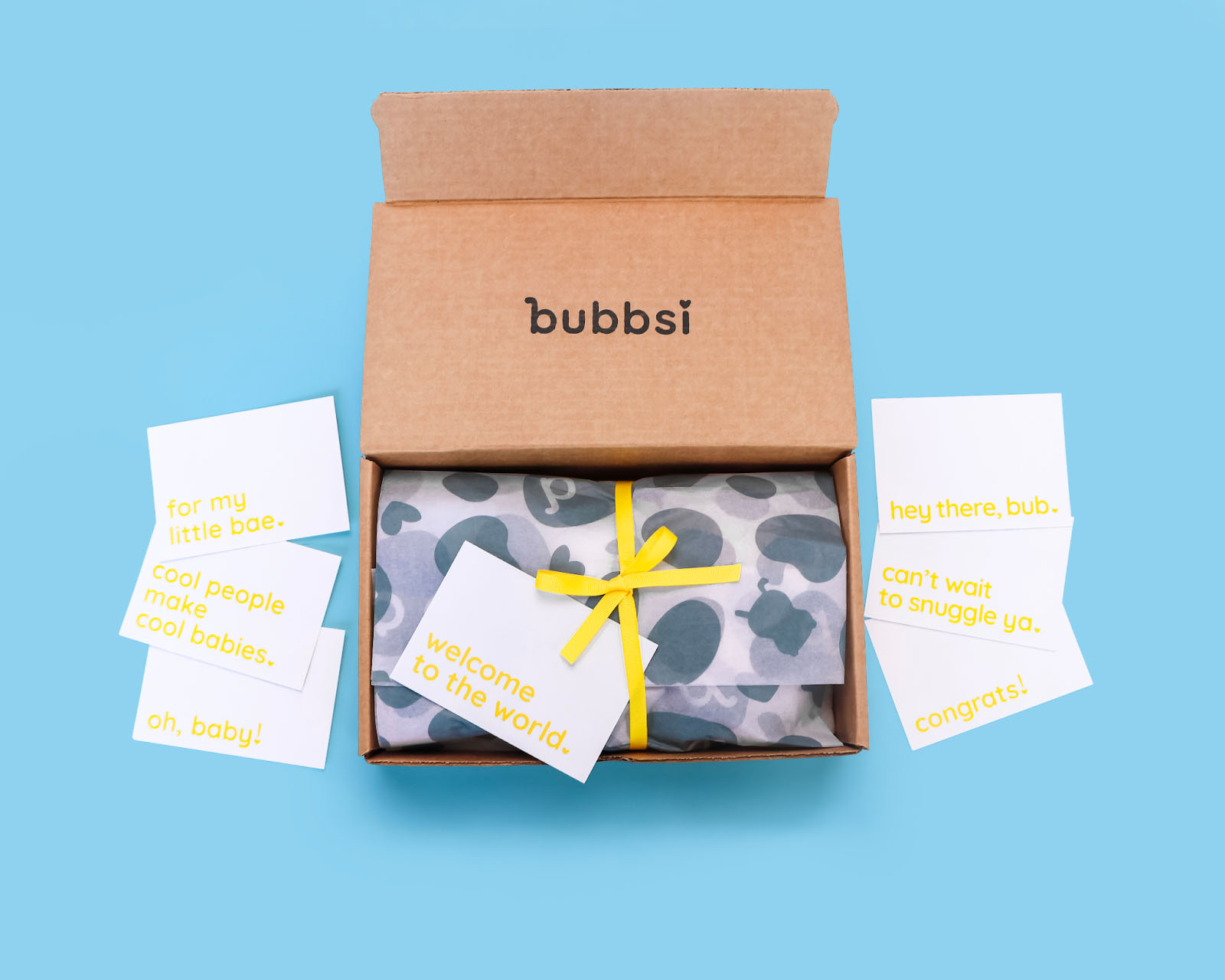
Bubbsi custom box and its inserts (Source: Fera.ai)
4. Use eco-friendly and sustainable packaging
Seventy-two percent of Americans prefer products with recyclable or reusable packaging, with the same study showing that 74% of younger generations are more likely to choose a product based on its sustainability. To be able to connect with customers better, share the same values and start with your product packaging.
Eco-friendly packaging is made from materials that can be replaced, renewed, or replenished. Reusability is an aspect of sustainability that gives packaging a second use or more. There are plenty of innovative eco-friendly packaging materials out in the market right now, such as hemp, mushroom, and seaweed.
However, if your small business is struggling to use eco-friendly packing materials that are also affordable, a cardboard box made of paper pulp is more than enough. These boxes are in abundance, with recycled products produced daily.
And a great way to get your message across is ensuring your customer knows you support efforts to save the environment. Look at how Berlin-based company Malimo implements its sustainability efforts—branding its cardboard packaging boxes with just how many trees its brand and its customers save per order.

(Source: Packhelp)
TIP: Take it a step further and use FSC-certified packaging. The FSC certification is a globally recognized symbol that ensures that if your packaging is made from virgin fibers (freshly cut trees, in short), those were harvested from responsibly and ethically managed sources.
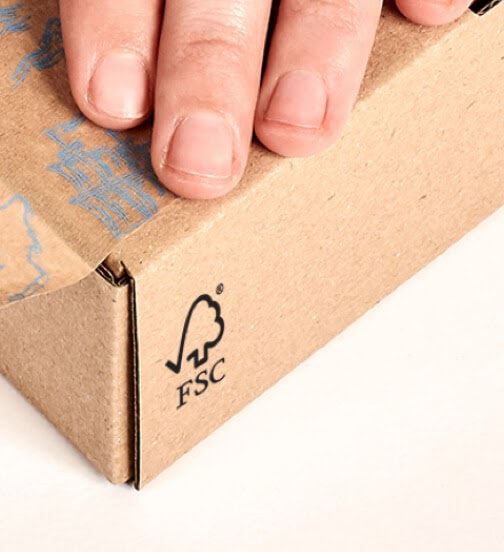
(Source: HashtagPaid)
5. Include relevant product information
While it’s expected that customers have done their research prior to buying your products, they might also need information once they receive their order—and you can leverage this need to enhance the boxing experience.
Take for example how luxury chocolate brand To’ak enhances its customer unboxing experience by providing guides to their chocolates. It includes a taste-pairing guide to help guide customers through a tasting experience, similar to the tasting guides you get with wine or whiskey products.
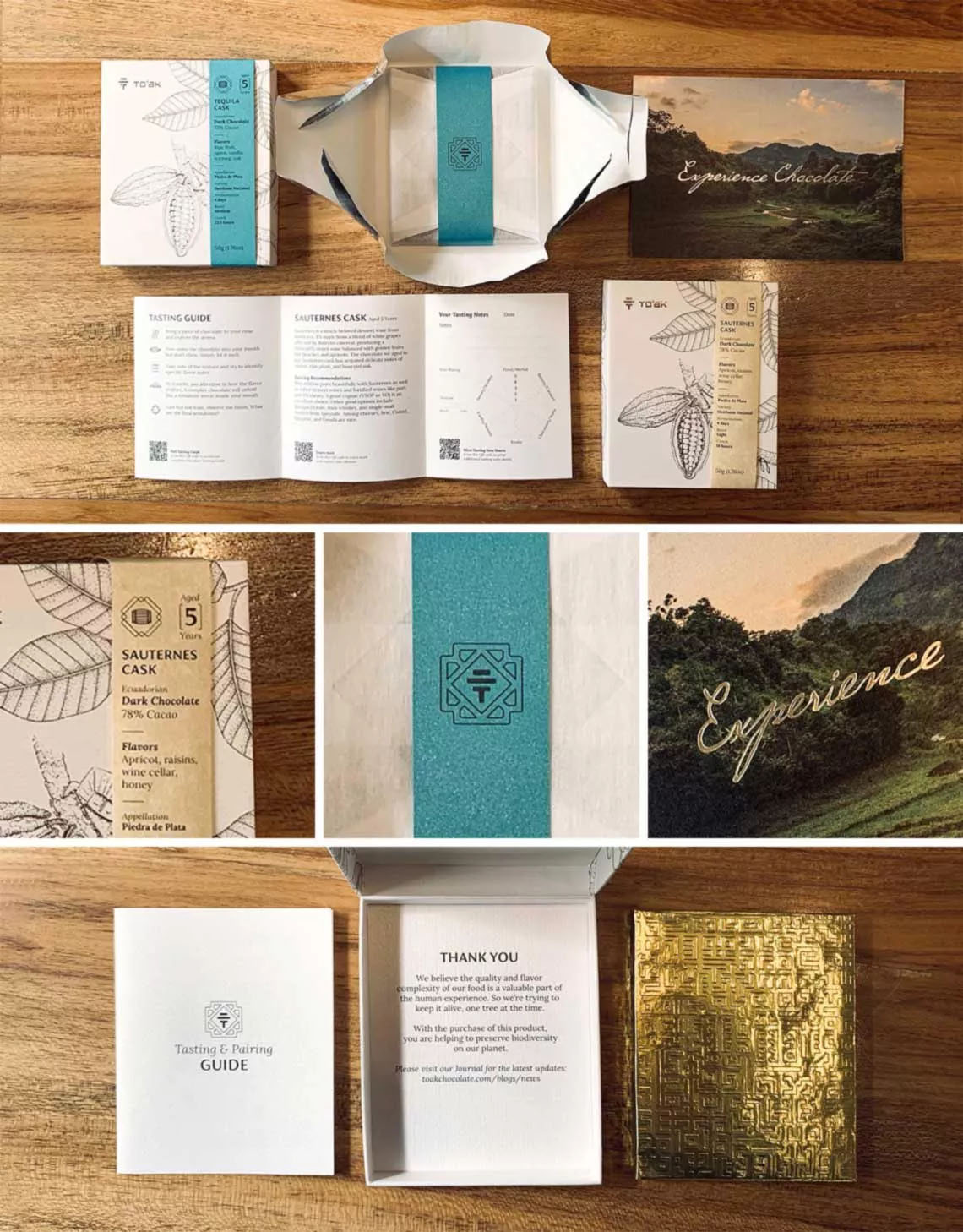
Luxury chocolate brand To’ak’s product inserts in their custom packaging (Source: Omnisend)
6. Use connected packaging
Unboxing experiences can be truly immersive and present a huge opportunity to set up a second purchase by connecting customers with other channels. This is where connected packaging comes in.
Connected packaging has QR codes, barcodes, or images printed on it and these can be scanned with a browser-based app to connect customers to relevant content or experiences. It can link to a web page, an augmented reality experience, or even a fun challenge (or discount!).
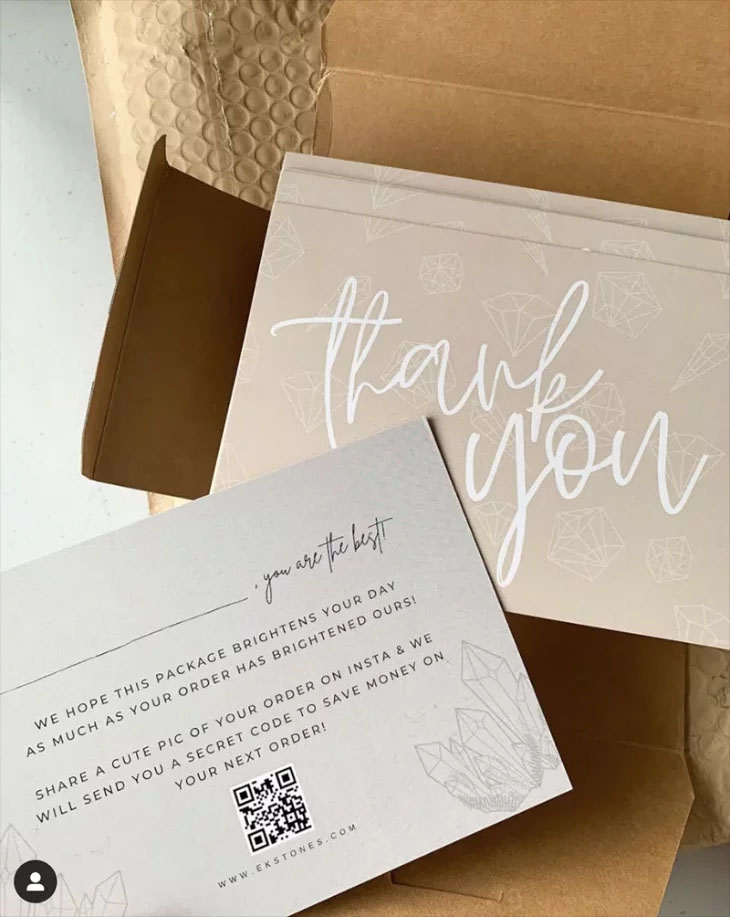
This brand included a QR code in its insert card to help customers easily accomplish two things—encourage customers to share their purchase and reward them with a discount on their next order. (Source: Whiplash)
Virtual and augmented reality are top ecommerce trends, and you can leverage this trend in your packaging, too. Potato chips brand Lay’s relaunched its Smiles campaign in September 2020 and featured the smiles of people who helped the community during the pandemic. When customers scanned the QR code on the packaging, they could learn more about the person behind the smile featured on each bag. It’s a great way to tell their brand story to customers and inspires people to support the brand more.

Lay’s product packaging for its SMILE campaign (Source: Packaging Strategies)
7. Go with a branded hashtag or a catchy slogan
Aside from using your logo to customize your outer packaging, you can also use a catchy slogan or a branded hashtag for faster recall. It can also encourage your customers to talk about their unboxing experience on social media in a way that you can track.
For example, campaign-specific hashtags help customers join in on the conversation. Prominently display them on your packaging like what skincare brand La Roche-Posay did with its boxes, printing the hashtag #skinismorethanskin.
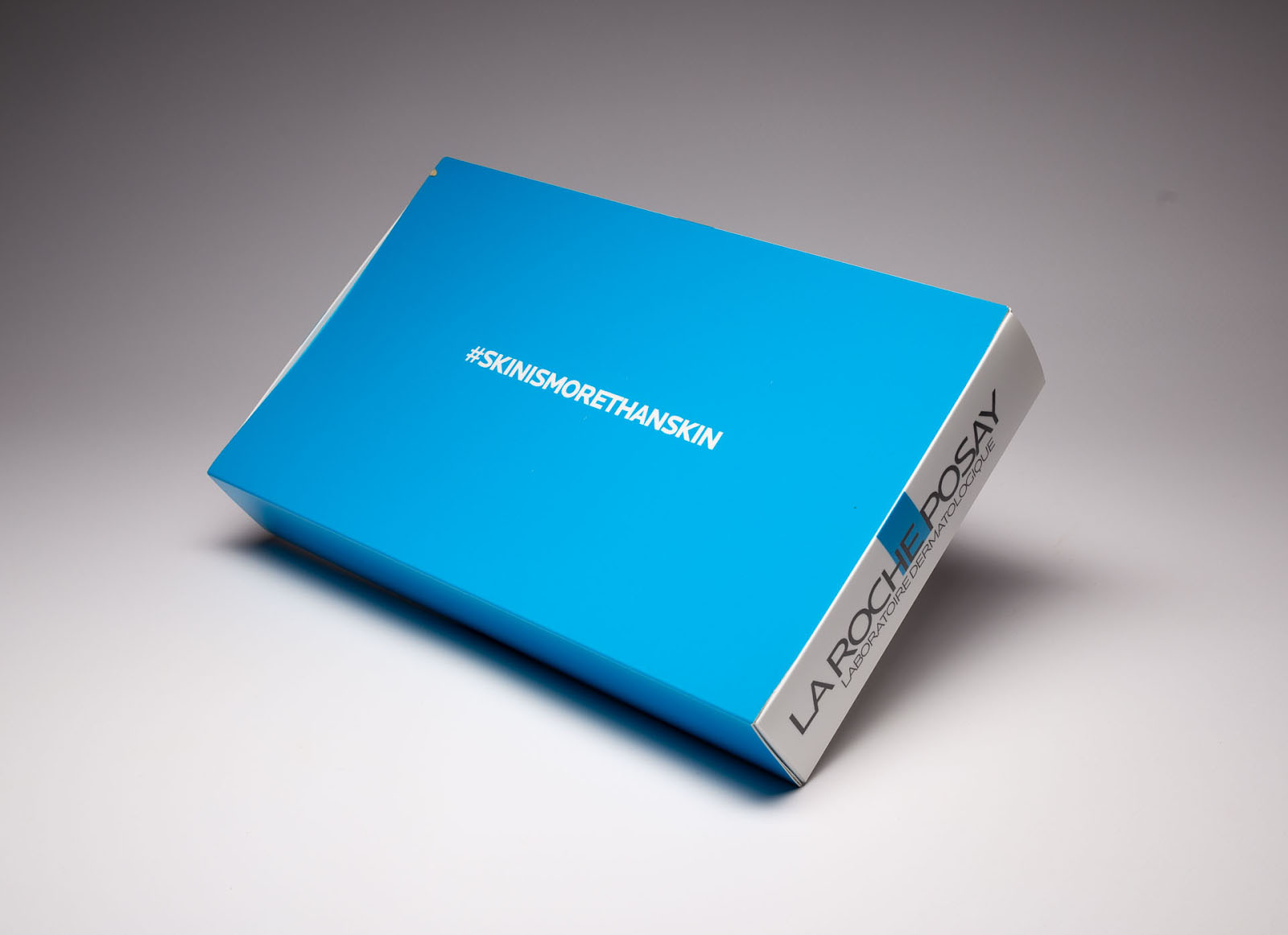
La Roche-Posay printed its hashtag on its custom box with brand colors (Source: Structural Graphics)
You can also put your slogans to enhance brand awareness, aside from your logo, as shown by these brands below.
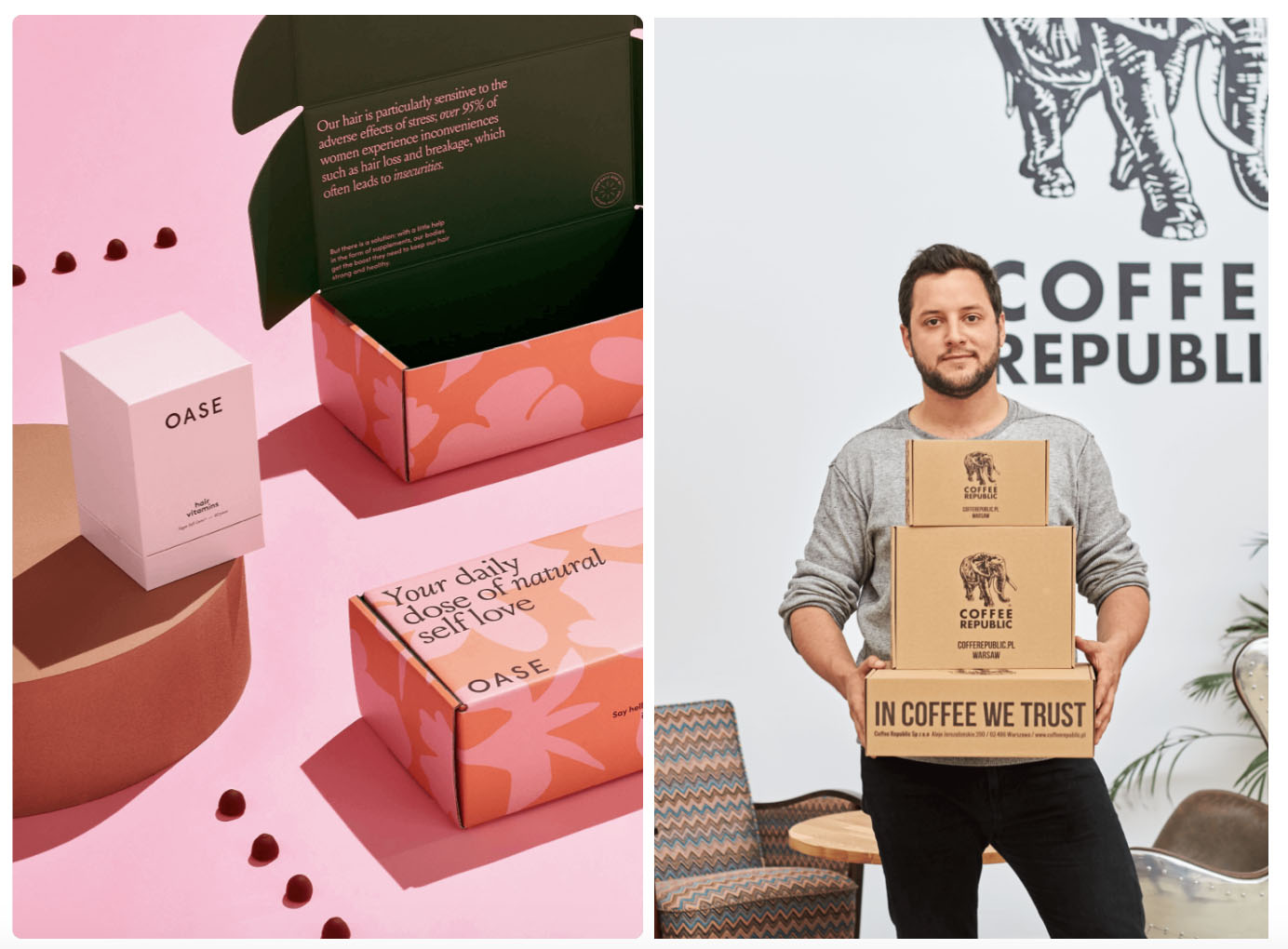
OASE and Coffee Republic slogans and taglines printed on their custom boxes (Source: Packhelp)
8. Personalize your packaging
Making your customers feel valued helps create lasting relationships, which inspires brand loyalty and repeat buyers. Even a simple thank you note, whether handwritten or incorporated in your packaging design, will go a long way.
If you are packaging your orders yourself, make an effort to write a handwritten thank you note. It can help you stand out from large competitors—bonus points if you write their first name on your note.
Botanic and Luxe adds a handwritten piece in their orders, together with dried eucalyptus leaf and rose, to make the unboxing experience memorable.
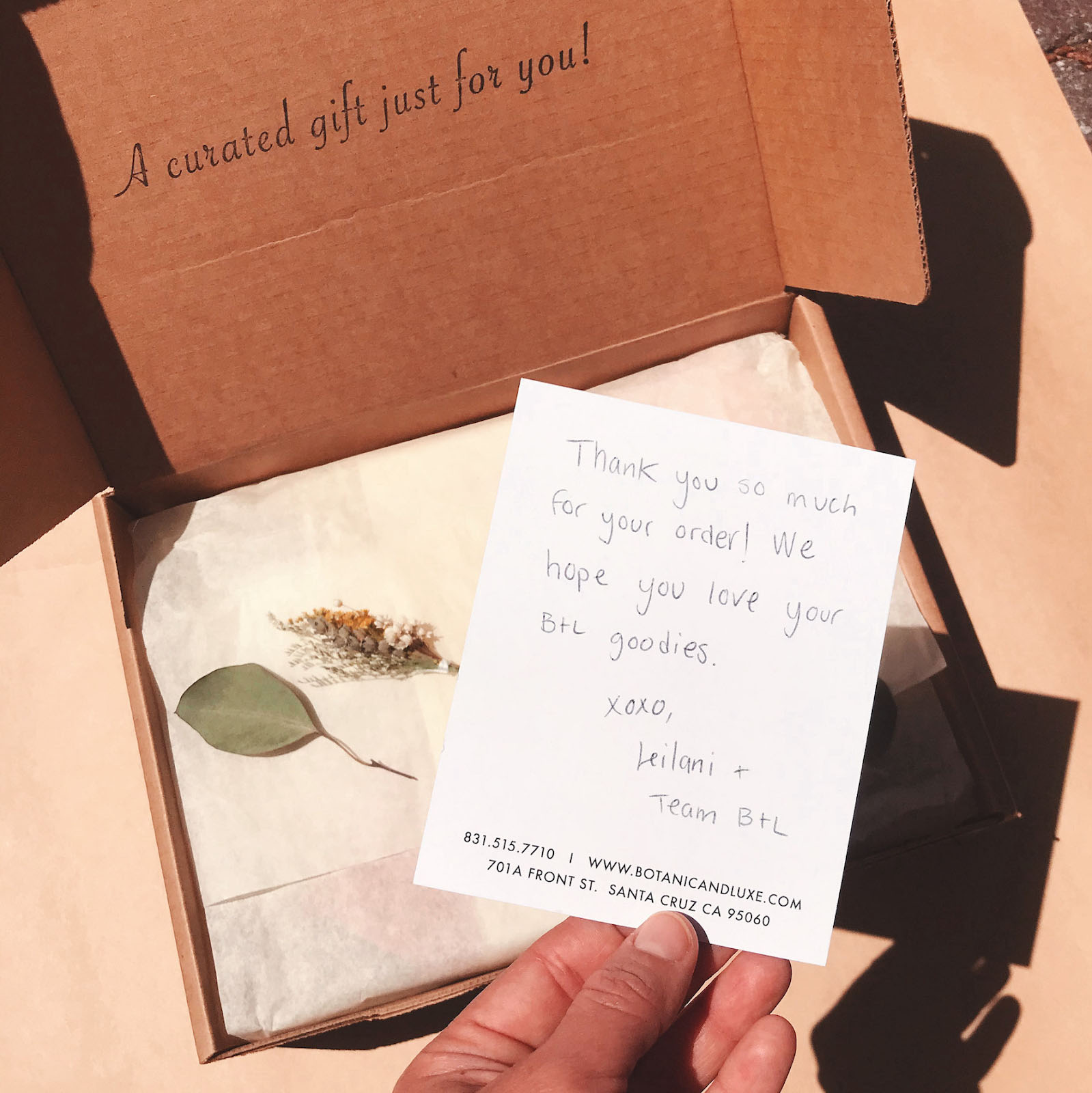
Botanic and Luxe’s special touch, a handwritten note inserted in each of their orders (Source: Square)
If you fulfill your orders through a fulfillment provider, you can include thank you notes in your picking list. This is what MM.LaFleur, a New York-based womenswear brand, does with their orders.
9. Place extras for a surprise
Place some items that provide extra value for your product. It can be a return label to make it easier for customers to return purchases if something isn’t working for them, a discount code for the next purchase, a simple treat, and free samples of other products. According to Square’s 2021 Future of Retail report, 47% of shoppers see product samples and coupons as a way to enhance their unboxing experience.
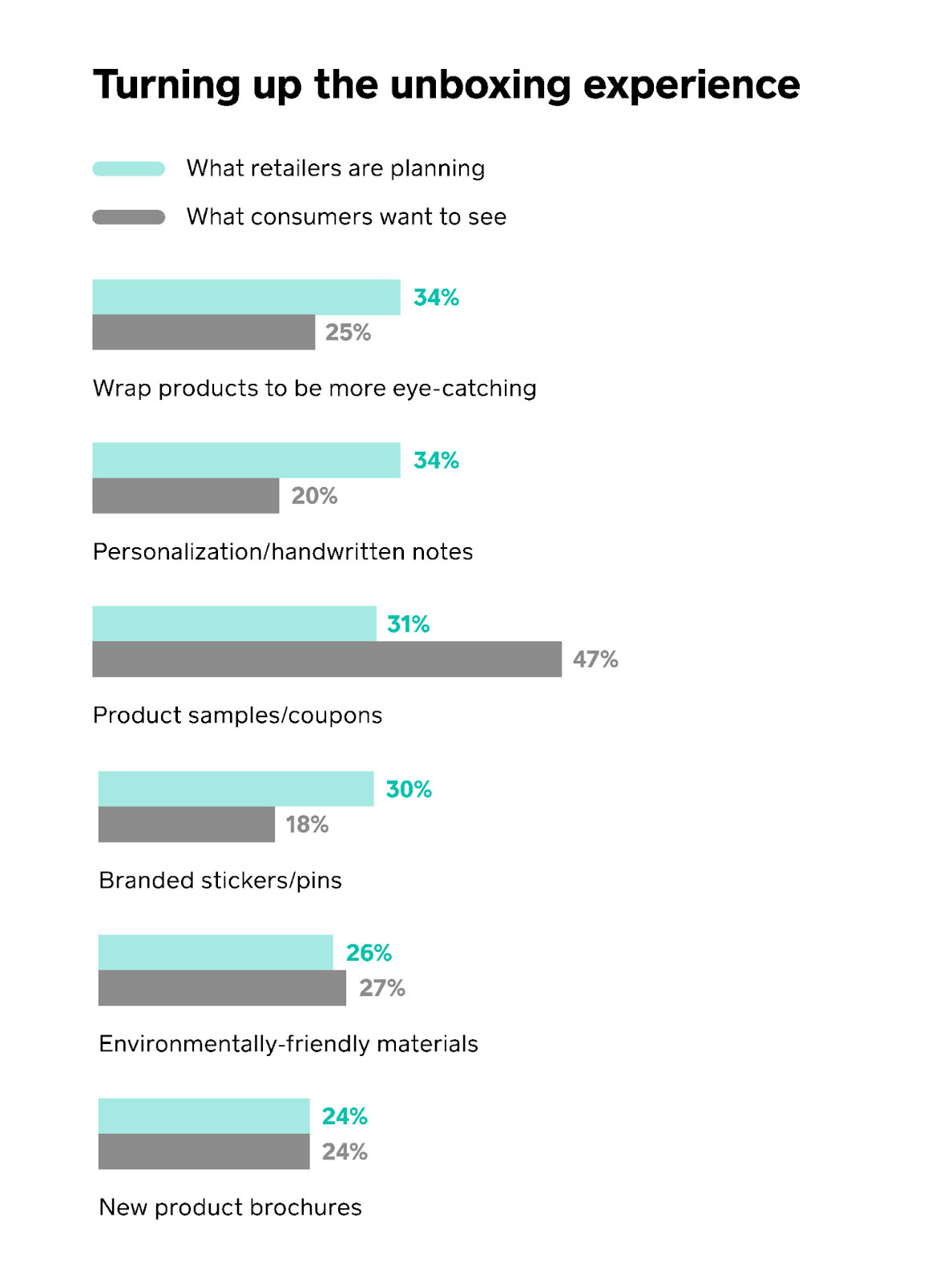
(Source: Square)
Sephora completely nails this part of the unboxing experience all the time. It is known for its superb packaging and plenty of product samples.
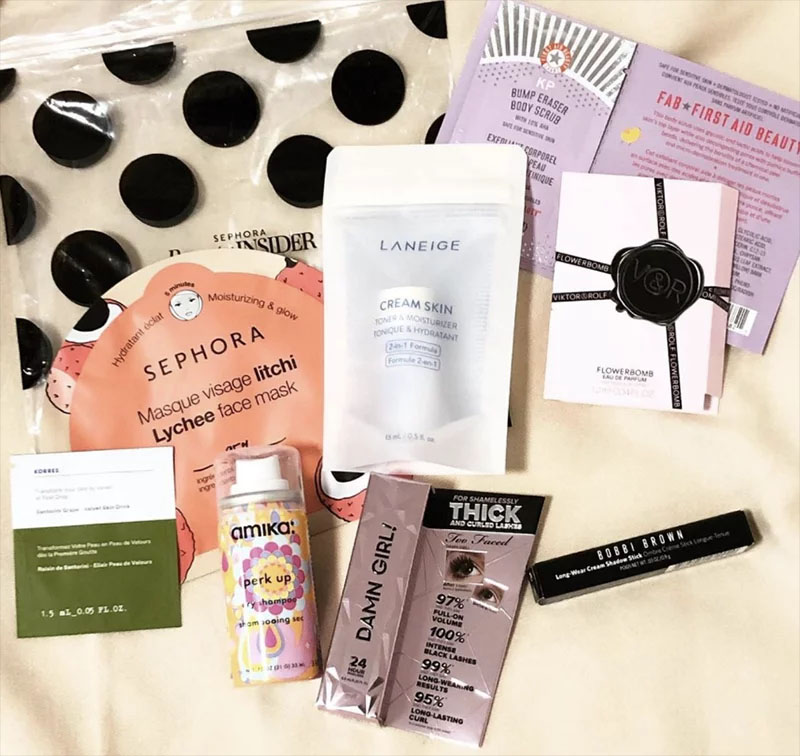
An unboxing experience from Sephora—lots of free samples (Source: Whiplash)
10. Encourage customers to share their unboxing experiences on social media
Ideally, providing a nice unboxing experience for your customers will result in user-generated content (UGC) in the form of photos and videos shared on social platforms. These are much like customer reviews and help build brand trust.
Encourage customers to upload their own videos unboxing packags on social media or to your website as custom reviews. Let them use your brand hashtag.
Here are some tips to leverage this type of UGC for your brand:
- Engage with these posts once you find them on social platforms. It helps build customer relationships and lets customers know that you “see” and value their feedback.
- Share unboxing videos of your products on your social channels, on emails, or on your website. For example, create an Instagram highlight of all unboxing videos, a playlist of unboxing videos on YouTube, or regular blog posts that link to reviews.
- Partner with influencers who create unboxing videos and who are popular with your target audience. For example, toy companies can tap popular YouTube unboxing influencers like Ryan’s World.
Bonus: Get on the newest trend—packing videos
In recent years, another ecommerce trend has emerged that both customers and ecommerce brands are getting in on—packing videos. Packing videos are reversed unboxing TikTok videos—ecommerce brands show they pack a real order on camera. As of this writing, the hashtag #packingorders already has 13.1 billion views. It’s a less expensive way to do content marketing than partnering with influencers.

Bonus: Go with Value-engineered Packaging for a Cost-effective Unboxing Experience
As a small business, adding all these touches for a great unboxing experience can be costly and cut into your profits—something that we all know can hurt in the long run and isn’t really sustainable.
Enter value-engineered packaging, an intentional form of packaging orders that doesn’t sacrifice the unboxing experience (and the aesthetics that need to go with it) for sustainability.
Here are some other ways you can incorporate the tips we outlined above into a single or lesser packaging design:
- Print a thank you note on the inside of your packaging box instead of adding a separate note or card
- Print your social media handles on the box instead of printing stickers or business cards
- Print a QR code that links to a page with a discount code instead of a separate card
Did you know? Custom-made boxes usually end up being less expensive than producing all the extras you need to put in your packaging box. Print all important information right on the box to save.
Unboxing Experience Brand Examples
We are Knitters
We Are Knitters is a global subscription brand that provides knitting experiences to customers in over 40 countries around the world. It nails all the recommended ideas we mentioned in our tips above—eco-friendly mailer boxes, slogan emblazoned right away on its packaging, stitched X’s to stay on brand (knitting), customized packing tapes, well-packaged inserts, and a guide to the products inside the box.
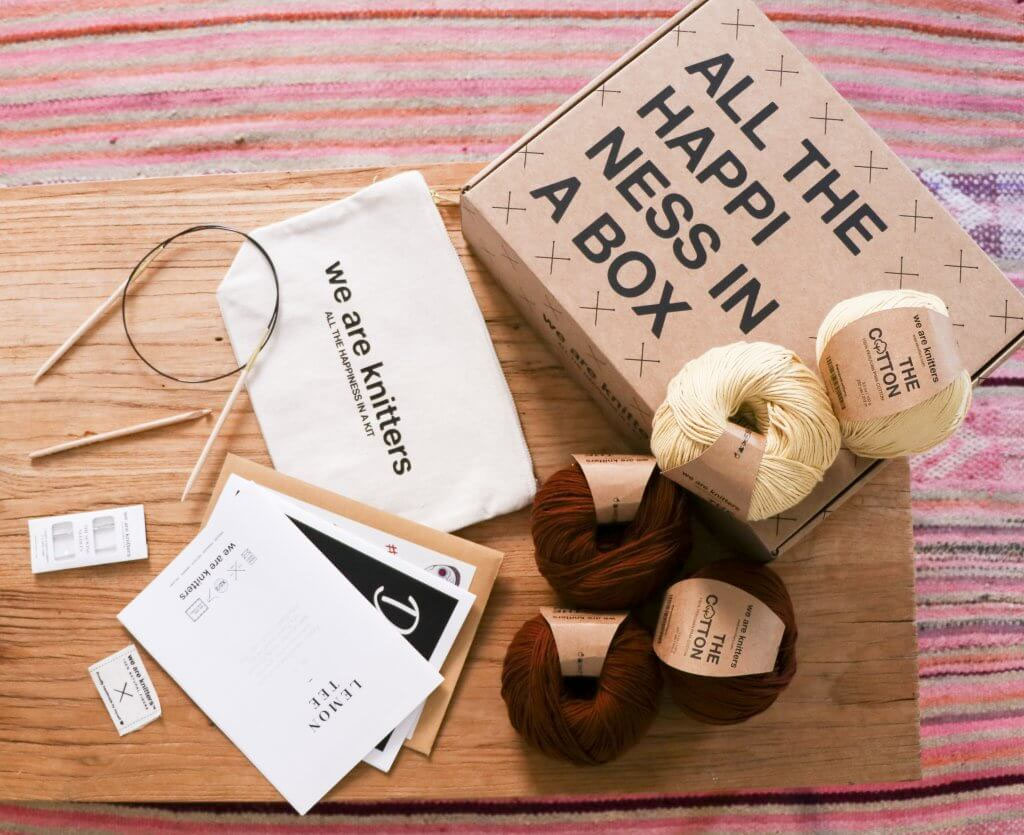
Concrete Jungle
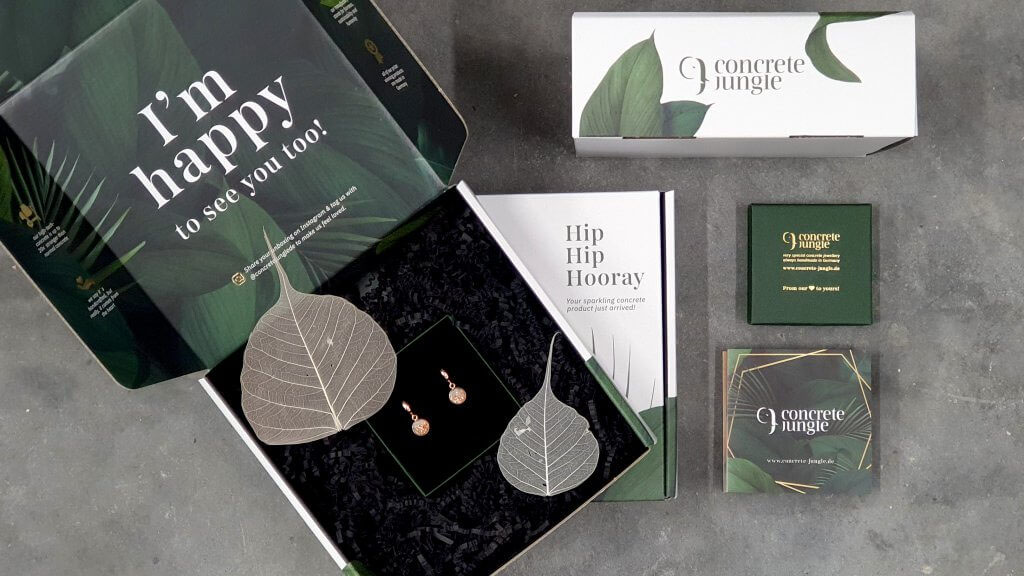
Germany-based jewelry brand startup Concrete Jungle uses a double-sided mailer box to utilize the inside of the packaging to deliver a note for their customers. It also uses an insert to keep small jewelry items in place while in transit. Its unboxing experience is a true extension of their brand. From the website to the product packaging, it just screams Concrete Jungle all throughout.
Blue Apron
Blue Apron is a meal kits company that provides meal cooking ingredients packed in the right portion sizes with clear step-by-step instructions for meal preparation. The meal boxes are branded with the brand’s logo and color, with recipe cards inside the box.
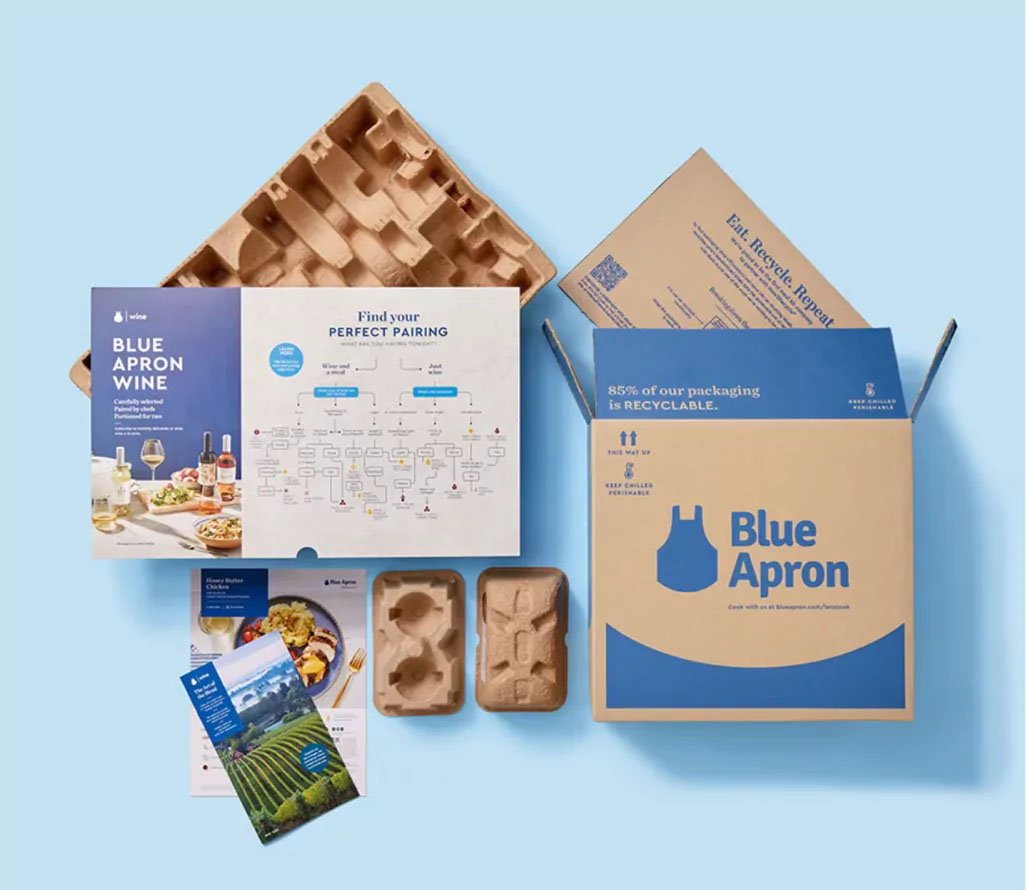
(Source: Lifesight)
Chasin’ Unicorns
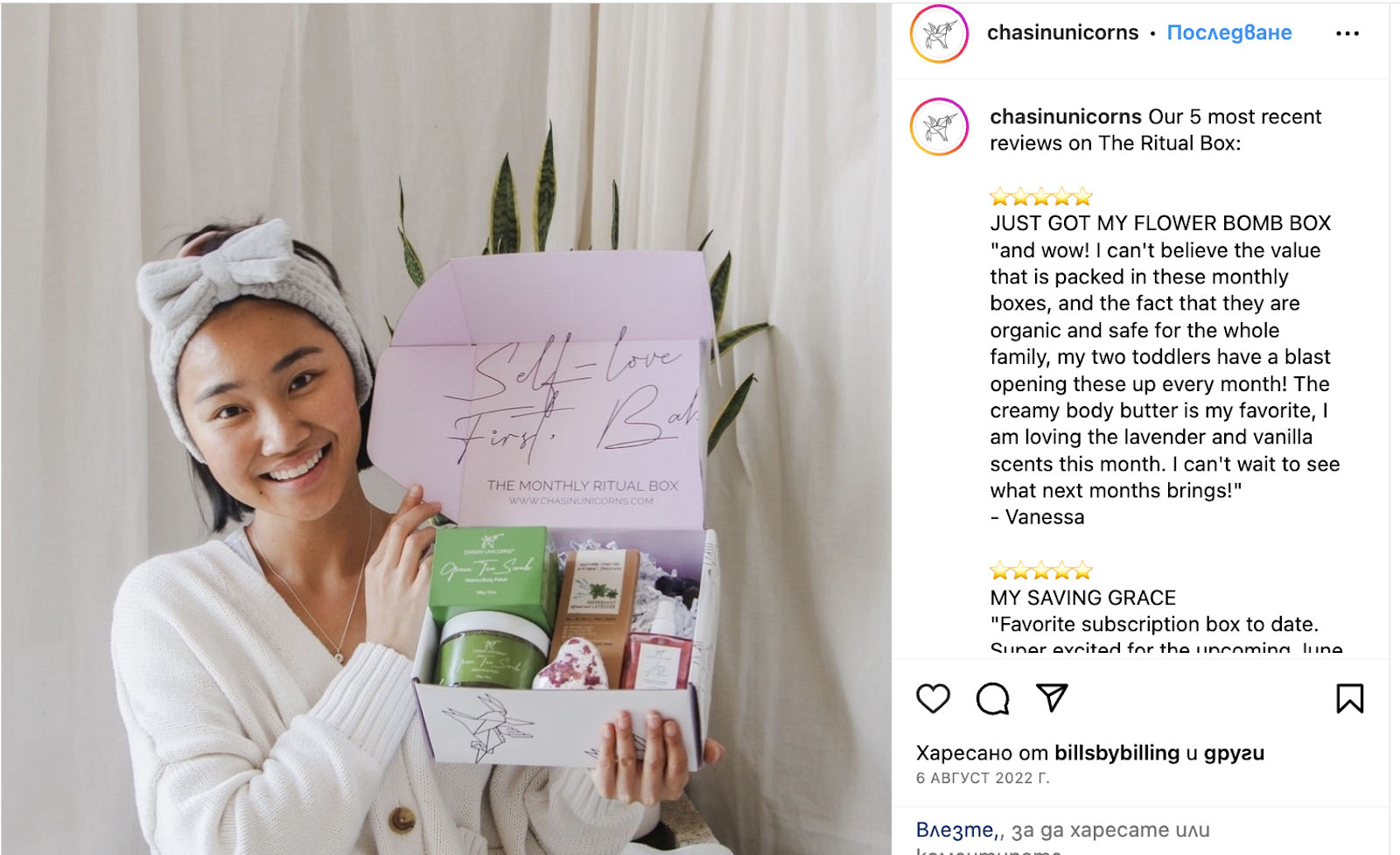
Chasin’ Unicorns is a fully online subscription box company that sells self-care subscription boxes called ritual boxes. Its Instagram account is a goldmine of UGC content, with so many tagged posts of unboxing videos—evidence that the brand is clearly doing something right, delivering this awesome unboxing experience to its customers.
|
Click through our related articles below to learn more about how to strategically source packaging materials for your products:
- Packaging Supplies: How to Choose Packaging for a Product
- Creative Small Business Packaging Ideas + Examples
- Best Sources for Cheap Shipping Supplies for Small Businesses
Why an Unboxing Experience Is Important
Providing a good unboxing experience goes beyond just aesthetics. It creates brand awareness, delivers a great brand first impression, elevates brand appeal, and helps inspire brand loyalty, which leads to more sales overall.
Creates & Increases Brand Awareness
Unboxing videos have grown increasingly popular in recent years. In social platforms, unboxing hashtags have millions of user-generated content and billions of views. Ensuring that you have a well-packaged product motivates and encourages buyers and partner influencers to share their unboxing experiences in these channels, which in turn, help you reach a wider audience.

As of this writing, the hashtag “unboxing” has generated over 4.8M posts in Instagram and more than 97B views in TikTok.
And if the stats above aren’t enough, Google Trends show that views on unboxing videos have more than doubled in 2021 from 2018—from 47% to 100%, and uploads have increased by more than 50%.
Imagine the impact of these numbers—the more exposure your business and products can get, the more chances people would discover your brand and buy from you.
Delivers a Great Brand First Impression
The unboxing experience and your product packaging are crucial parts of your brand. As they are a continuation of your brand storytelling, they have a direct impact on your customer’s first impression of your brand if they are new and maintain a standard of quality for your existing ones.
A well-thought-out unboxing experience also increases the perceived value of your products. Customers always want to get their money’s worth when they buy products, and if their order comes in amazing packaging, they tend to think they got more than what they paid for and see your product as high quality.
Elevates Brand Appeal
Historical studies reveal that 52% of people are more likely to purchase again from an online brand if they receive products in premium packaging. Clearly, well-thought-out product packaging contributes greatly to an unforgettable unboxing experience. Packaging is a good marketing opportunity for online merchants and contributes to the perception of brand value.
Inspires & Cultivates Brand Loyalty
The key to driving customer loyalty is consistently delivering personalized customer experiences, and including a personal touch to unboxing experiences is an easy and straightforward strategy to implement. A well-packaged product makes a customer feel valued, which in turn, subtly encourages them to make repeated purchases.
Effective Marketing Strategy
Providing an unforgettable unboxing experience is also a great marketing strategy because it helps generate user-generated content (UGC) in the form of unboxing videos. Unboxing videos are basically customer reviews in a visual format. Studies show that 40% of consumers are more likely to convert with UGC than paid ads, with seven out of 10 shoppers admitting to being influenced by friend and influencer reviews.
Bottom Line
A well-thought-out unboxing experience encourages people to share what they have received with others and online. You can see how effective your unboxing experience is with how much it creates brand awareness, loyalty, and repeat purchases from customers.
Using the ideas we listed above, reassess your packaging. Consider costs, average order size, and profit margins, and weigh in on how much you can spend to create a better unboxing experience for your customers.